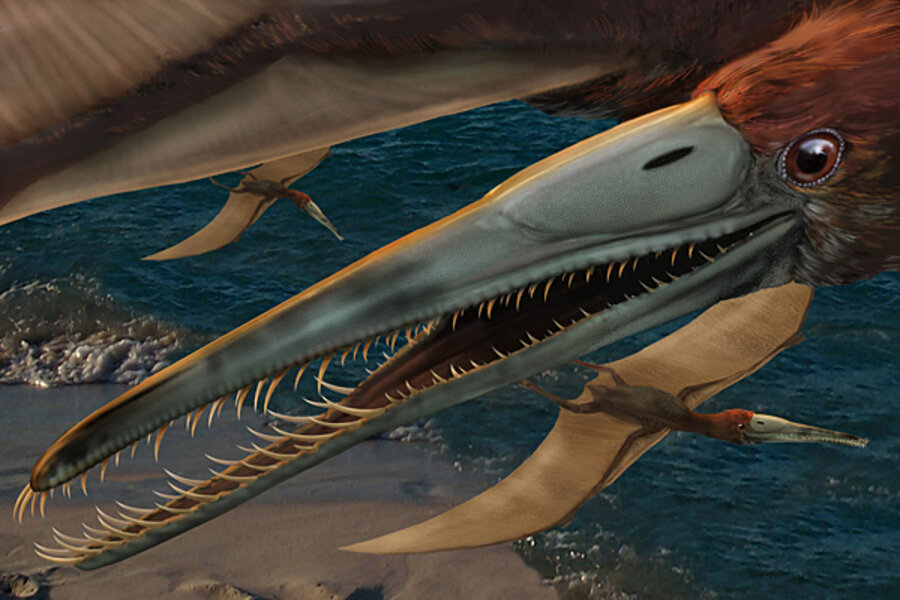Aetodactylus halli fossil: a clue in North American mystery
Loading...
When it came to the creatures that ruled the skies near the end of the age of the dinosaurs, North America had appeared to include a curious omission.
Pterosaurs – literally, "winged lizards" – were the first vertebrates capable of flight, and one specific family, called Ornithocheiridae, was plentiful throughout the world. Except in North America.
Enter Aetodactylus halli, a reptile that patrolled the air above what is now Dallas 95 million years ago with a nine foot wingspan and a snaggle-toothed grin.
The fossilized jawbone, found in north Texas in 2006 and announced in the current issue of the Journal of Vertebrate Paleontology, is compelling paleontologists to look at the holes in North America’s pterosaur story differently.
Aetodactylus halli is only the second Ornithocheirid to be discovered in North America, but the fossil “hints at a diversity of pterosaurs in the Cretaceous of North America that wasn't previously realized,” said paleontologist Timothy Myers of Southern Methodist University’s Huffington Department of Earth Sciences, who identified and named the Aetodactylus halli, in a press release.
The Aetodactylus halli fossil places the creature in the middle of the Cretaceous period, which ran between 145 million to 65 million years ago. At that time, a central swath of what is now Texas was covered by the Western Interior Seaway, which split the modern-day continent in two, running from the Gulf of Mexico to the Arctic.
The only other North American Ornithocheirid was discovered here, too, suggesting that the dearth of other Ornithocheirids in North America might be more a function of geography and geology than actual biological distribution.
"The ancient sea that covered Dallas provided the right conditions to preserve … the delicate bones of flying reptiles that fell from their flight to the water below," said Louis Jacobs, also in the press release.
The shallow waters of the sea created an environment ideal for preserving fossils like Aetodactylus halli.
"The rocks and fossils here record a time not well represented elsewhere in North America,” Mr. Jacobs added. “That's why two species of ornithocheirids have been found here but nowhere else, and that's why discoveries of other new fossils are sure to be made…."
The species is named after Lance Hall, the hobby fossil hunter who found the mandible in an exposed piece of shale near a highway southwest of Dallas. Aetodactylus means “eagle finger.”





